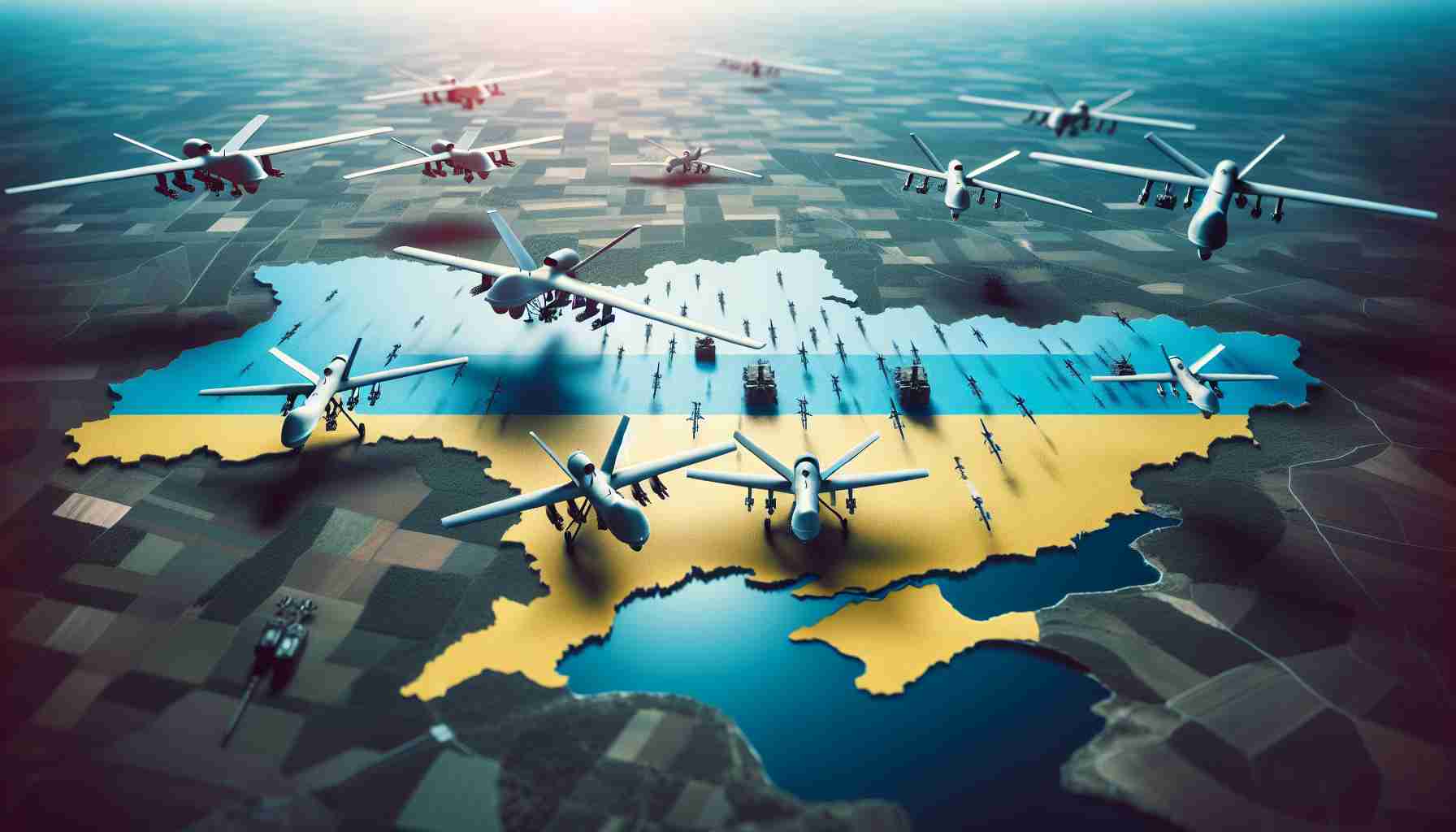- Ukraine’s military executed a precision strike using a Shark surveillance drone and HIMARS launcher to dismantle a Russian surveillance operation in Zaporizhzhia Oblast.
- The successful operation highlights Ukraine’s strategic use of technology in aerial warfare, maintaining a critical edge in the ongoing conflict.
- Russia adapts by deploying advanced fiber-optic drones, challenging Ukraine with an escalating arms race of innovation and adaptation.
- Ukraine’s alliances face challenges as U.S. domestic policy shifts, potentially affecting military aid tied to strategic interests like rare earth minerals.
- The broader conflict underscores the delicate balance between technological superiority and diplomatic maneuvering, crucial for Ukraine’s sovereignty and survival.
The vast expanse of Zaporizhzhia Oblast turned into a silent theater of high-tech warfare as Ukraine’s military executed a meticulously planned strike. A Ukrainian Shark surveillance drone, slicing through the icy skies, locked onto an innocuous civilian truck. Inside, two Russians prepared to launch an Orlan drone, a key piece of Russia’s surveillance apparatus.
With urgency, Ukraine called in one of their formidable HIMARS launchers, armed with a cheerfully described “cluster munition.” Exploding overhead, the missile obliterated the Russians’ plans and sent dangerous fragments cascading over their position. The swift destruction of the Orlan team underscored Ukraine’s unwavering resolve to maintain their edge in aerial warfare.
However, this small victory in the cold fields of southern Ukraine belies a larger challenge. In an ever-intensifying conflict, Russia adapts by deploying fiber-optic drones that evade Ukrainian jamming capabilities, cornering Ukraine into a tight arms race of innovation and adaptation.
Against this backdrop, Ukraine’s international alliances grow increasingly tenuous. As Ukrainian forces successfully deploy American-made weapons on the battlefield, political tremors back in the States threaten their continuity. As U.S. domestic policy tilts, voiced demands suggest extracting astronomical values in rare earth minerals in return for military aid, risking the arsenal upon which Ukraine counts.
The outcome of this technological duel, framed by political volatility, hinges on Ukraine’s strategic foresight and diplomatic finesse. While the snow-covered dirt roads continue to bear silent witness to these battles, the question lingers: Can Ukraine preserve its freedom without compromising its future? The battle for drone supremacy is more than military might; it represents the fragile balance between sovereignty and survival in an unpredictable world.
Can Drones and Diplomacy Secure Ukraine’s Future?
How-To Steps & Life Hacks
1. Improving Drone Resilience: To counter advanced Russian fiber-optic drones, Ukraine can invest in electronic warfare training programs and enhance signal encryption to protect their communication channels.
2. Effective Use of HIMARS: Training personnel on the optimal use of HIMARS in various weather conditions could improve mission success rates. Incorporating real-time data analytics can help adjust tactics quickly during field operations.
Real-World Use Cases
– Surveillance and Reconnaissance: Drones like Ukraine’s Shark models play a crucial role in modern warfare by providing real-time intelligence, helping military units make more informed decisions.
– Artillery Targeting: UAVs (Unmanned Aerial Vehicles) are essential for coordinating with artillery units like HIMARS to hit enemy positions with high accuracy.
Market Forecasts & Industry Trends
The global market for military drones is projected to reach $12 billion by 2028, driven by the need for increased defense capabilities and technological advancements. Nations continually invest in unmanned systems to enhance intelligence, surveillance, and reconnaissance operations (link name).
Reviews & Comparisons
– Ukraine’s Drones vs. Russia’s Drones: While Ukraine uses U.S.-made systems like HIMARS paired with local drones for effective strikes, Russia counters with fiber-optic drones which provide a robust defense against electronic warfare.
Controversies & Limitations
– Cluster Munitions: The use of such munitions is controversial due to potential humanitarian impacts. Critics argue that they can remain dangerous long after conflicts end, posing threats to civilians.
– Political Ramifications: The demands for rare earth minerals in exchange for military aid highlight the ethical and geopolitical dilemmas facing Ukraine, raising concerns about long-term exploitation of resources.
Features, Specs & Pricing
– HIMARS: Known for its mobility and accuracy, capable of launching multiple precision-guided munitions at targets up to 499 kilometers away. The cost per unit can reach up to $5 million.
– Shark Drones: Typically deployed for surveillance, these drones offer high-definition imagery and secure data transmission under extreme conditions.
Security & Sustainability
– Cybersecurity: Critical to protect communication networks from adversaries attempting to intercept or jam signals.
– Environmental Impact: Rare earths mining, suggested as a condition for military aid, poses significant environmental and sustainability challenges.
Insights & Predictions
Expect more nations to focus on integrating AI with military drones to improve decision-making processes and autonomy in combat scenarios, potentially altering future warfare dynamics (Forbes).
Tutorials & Compatibility
– Drone Operation Manuals: Step-by-step guides on operating drones in military settings could be developed for ease of use by troops.
– HIMARS and UAV Integration: Training modules should be created to ensure seamless interoperability between artillery systems and drones.
Pros & Cons Overview
Pros:
– Enhanced surveillance and targeting capabilities.
– Increased strategic deterrence through advanced technology.
Cons:
– High operational costs and need for continuous innovation.
– Ethical and political challenges from using advanced military technology and foreign aid conditions.
Actionable Recommendations
– Strengthen Diplomatic Ties: Ukraine should seek to diversify its international alliances beyond the U.S. to stabilize military supply chains and reduce geopolitical vulnerability.
– Invest in R&D: Allocate resources to develop indigenous technologies that can counteract evolving threats like fiber-optic drones.
– Focus on Transparency: Clarify the humanitarian impact and strategic necessity of using controversial weapons like cluster munitions to maintain international support and oversight.
For those interested in integrating technology with military strategy, exploring further is essential at Lockheed Martin.




















